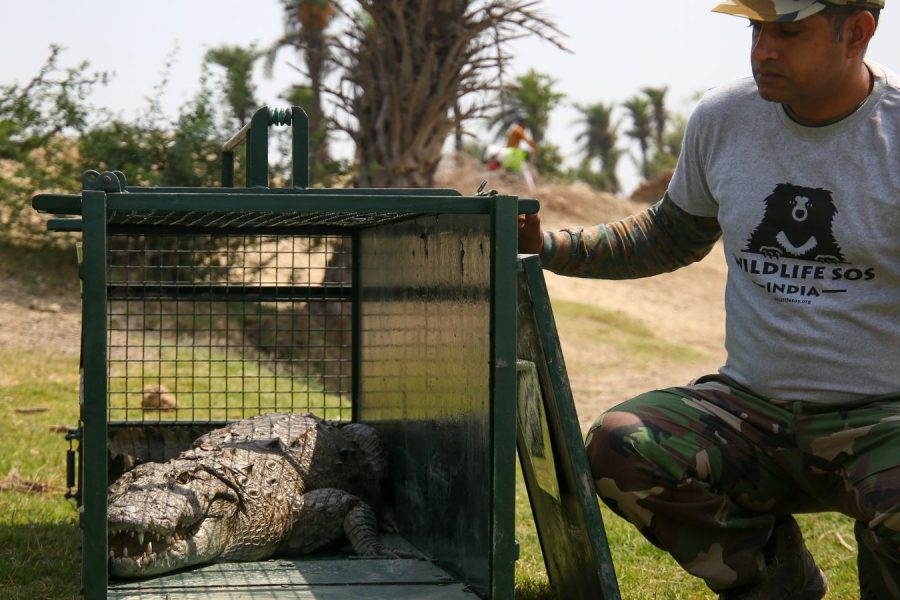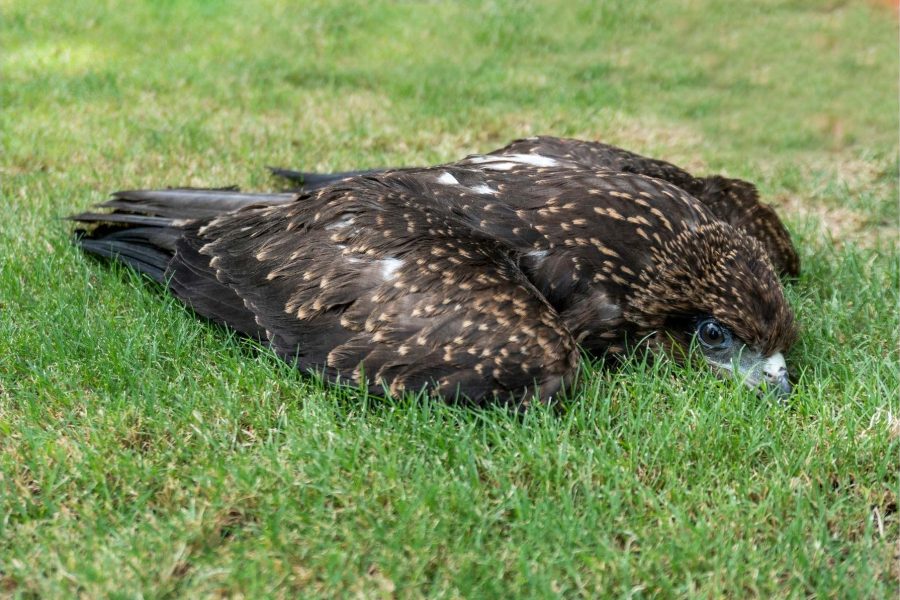Like every year, a fresh batch of individuals set foot inside the Wildlife SOS Manikdoh Leopard Rescue Centre (MLRC) in Maharashtra. With an eagerness to acquire new knowledge on the subject of leopard conservation, 64 forest guards from the Jalna Forest Training Institute in Jalna district visited MLRC recently.
Every year, the Wildlife SOS team in collaboration with the forest department hosts training programmes for the future guardians of India’s forests. This visit kicked off the year’s first such training programme. The trainees were given a full tour of the centre and shown the inner workings of Wildlife SOS in terms of the upkeep and management of rescued leopards. Moreover, having tackled both human-leopard conflict and wildlife rescues in the state for over 15 years, Wildlife SOS turned moderator-cum-educator for this session to disseminate knowledge on this particular topic.
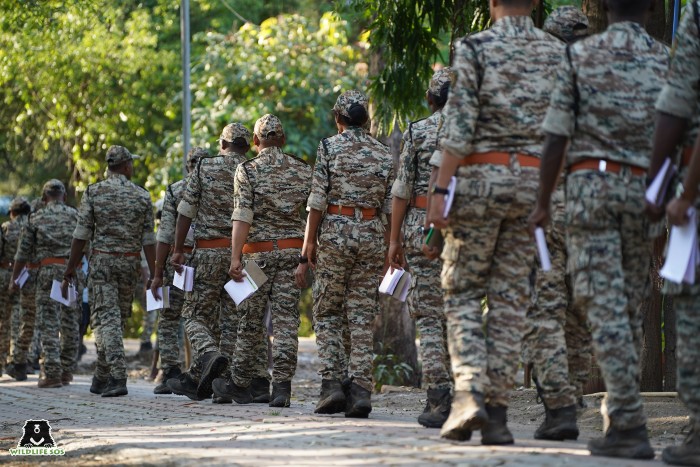
Participants were guided under the aegis of Dr. Chandan Sawane, Veterinary Officer and Mahendra Dhore, Project Manager, Wildlife SOS. As part of the tour of the centre, the trainees were first shown the leopard enclosures and their scientific management in captive care.
In addition to leopards who are young, the staff and the veterinary team also have to think of various ways to design the enclosures to suit the needs of handicapped and geriatric leopards. For leopards such as Shivani who has a missing forelimb, and Vitthal who is devoid of his right paw, the structural enrichments are built at a lower height. This helps them climb platforms with much more ease, and therefore, they remain active.
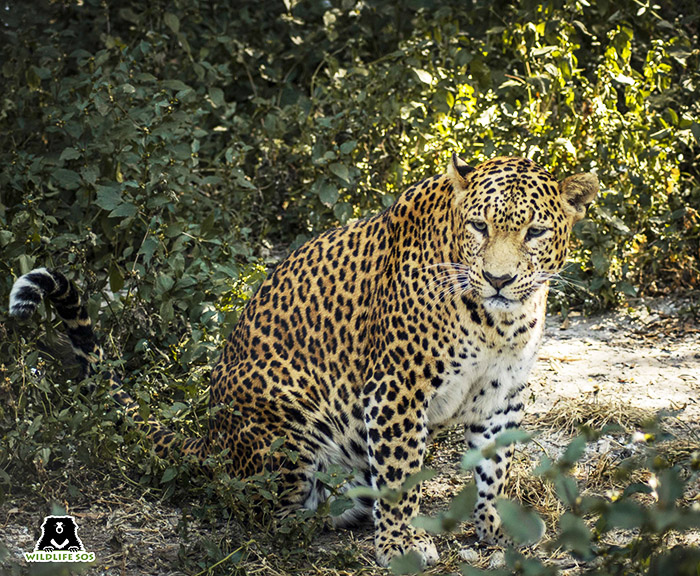
The tour also included a visit to the wildlife hospital where Dr. Chandan walked them through the medical equipment used in treatments, such as a laser therapy kit, portable x-ray machine, and an anaesthesia kit. These equipment are not just used for the treatment of leopards but other animals like jackals and hyenas as well. In June 2022, Wildlife SOS rescued a severely injured male hyena from a road accident that suffered a mandibular symphysis fracture (fracture in the lower jaw), following which a surgery was performed.
The participating trainees were also given an overview of the various types of rescues and the challenges in such situations that we as an organisation have to face. Recently, in December 2022, Wildlife SOS carried out five leopard rescues, all of which were unique in their own way. While one of them included rescuing a leopard from a well, another one involved a rescue operation where the leopard had entered a domestic cattle shed near a village. Possibly, the most difficult one among all the five rescues was that of a male leopard from a chawl (slum settlement) in Chakan region of Pune district.
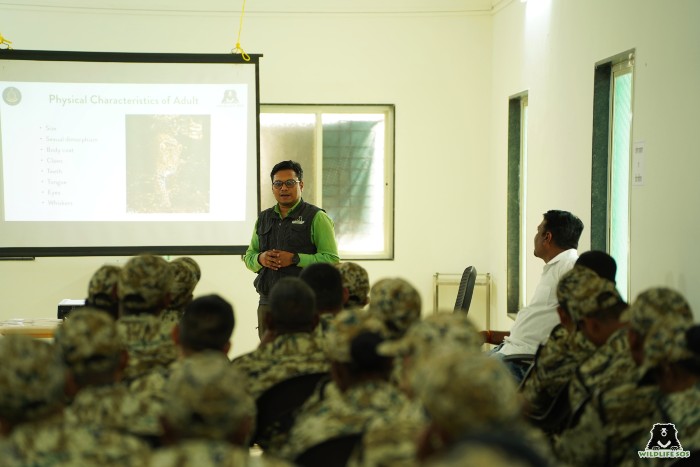
Such operations form excellent case studies for the trainees taking part in the programme. They were also introduced to a potpourri of rescue equipment such as snare poles, safety nets, net guns, blowpipes, tranquillising guns, shields and anti-scratching jackets, to name a few. All of these are absolutely essential when going for a leopard rescue operation, as the team has to be prepared for any kind of scenario.
Our team discussed the basics of leopard biology at length, such as the morphological (physical) and behavioural characteristics of the animal. The session also covered another important aspect of leopard conservation and human-leopard conflict mitigation, namely, cub reunions. For the past 15 years, Wildlife SOS has been assisting the Maharashtra Forest Department in numerous wildlife rescue operations, conflict mitigation efforts as well as reuniting separated leopard cubs with their mother. In fact, we recently completed the official reunion of the 100th cub in December 2022.
We are glad to share these broad aspects of leopard conservation work done by our organisation. We hope that the wealth of information shared can ultimately benefit frontline warriors in safeguarding Maharashtra’s forests and its leopards. Conducting such training programmes, however, requires an array of resources. As a reader, you can support our efforts by becoming a monthly donor for Wildlife SOS.



